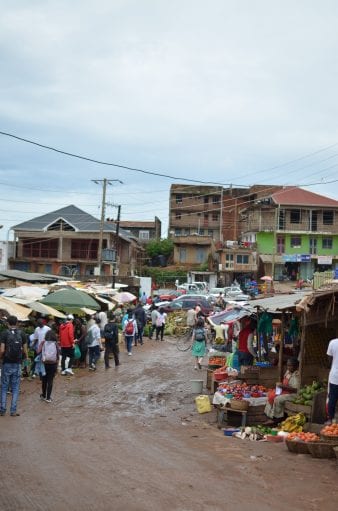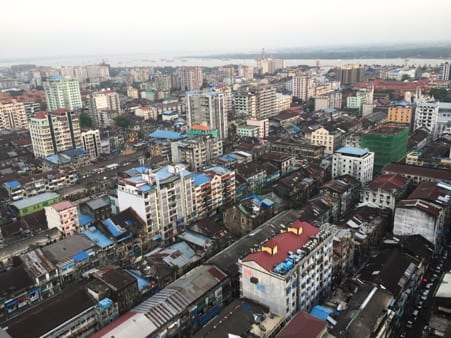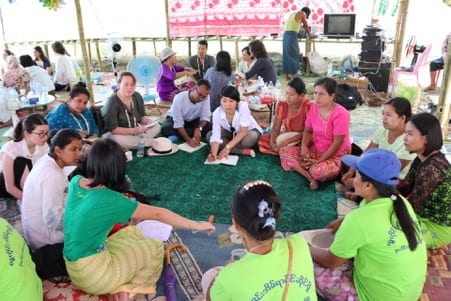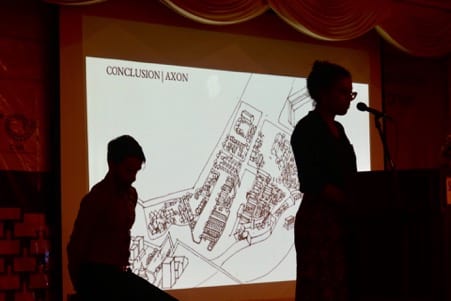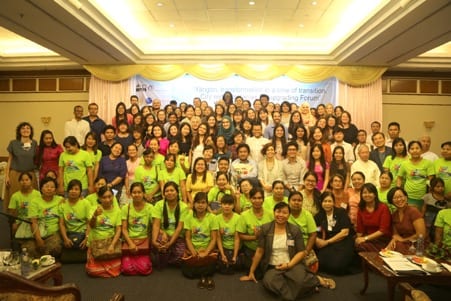The Better to Break and Bleed with: On Research, Violence, and Trauma
By Ariana Markowitz, on 19 December 2018
NB: This post contains graphic content.
In March 2018, I interviewed a Salvadoran artist who lives in the United States about his work on violence. As we discussed a project, he recounted seeing the body of a teenage girl that had been disinterred, raped, and left on the ground of the cemetery where she had been buried the previous day. “I remember the colour of her dress, the texture of the fluids on her body,” he told me. There was an anguished pause. “I’ve only told my partner, a friend, and you. It’s been years and I still see her.”
El Salvador is one of the most violent countries on earth, so I knew going in that I would be speaking with people who have experienced trauma about that trauma. Unlike a mental health professional or a faith leader, however, I entered these conversations for information, not to directly support recovery and healing. Fearful that my questions could cause harm, I sought guidance from friends who work with asylum seekers and survivors of sexual assault. Despite that preparation, I still struggled to respond to the artist in the moment, shunting aside my own reactions to ensure that he felt heard and that our conversation remained centred on him. Afterwards, overwhelmed with disgust and unease, I told myself that what the artist described had to be an aberration—an exceptionally violent incident, even in an exceptionally violent place.
But then, in the following weeks, I heard versions of the same story about different bodies in different places from different people. I came to understand that these stories were more about tactics than necrophilia: Salvadoran gangs use the rape of a corpse to taunt or exact revenge upon the family and community of the victim, tainting and deforming their grief and ratcheting up the ongoing conflicts amongst the gangs, and between the gangs and the Salvadoran state. A play I saw in San Salvador depicted this tactic, though I failed to recognize it for what it was, assuming the victim was drugged or unconscious. Now, months later, I was realizing that the rest of the audience, for whom this violence was part of their reality, did not make the same mistake.
All of this heightened my awareness of and sensibility to violence, and the more time I spent in the field, the more the stories and images of violence piled up. I had nightmares that turned into sleepless nights, and despite being exhausted I remained unable to rest. I took impulsive decisions to regain some agency amidst circumstances that felt beyond my control. Normally an extrovert, I often preferred to be alone, and apart from an occasional thrill of warmth or wonder, the luster of the world around me faded.
My agitation pursued me back to London where I took two months off. Once I tried to watch a film to distract myself, but the film’s negative foreshadowing unsettled me and I had an agonizing night struggling to keep my mounting panic at bay. When I got my hair cut, the stylist commented that my hair had grown during the months I was away and asked how my trip went. Without meaning or wanting to, a torrent of horrific stories streamed out of me. I watched people’s eyes widen behind me in the mirror.
Other academics and practitioners who work on similar topics reassure me that all of this is par for the course. I have heard about nightmares, insomnia, compulsive exercise, benders of all kinds, addiction, and the straining and splitting of relationships with friends, relatives, and lovers. Some people abandoned researching violence altogether, with one explaining simply that, “The work damaged my spirit.”
Despite the prevalence of trauma in the field, however, I received little formal guidance related to research challenges in violent contexts prior to beginning my fieldwork. Throughout the world, university ethics protocols for all disciplines draw primarily from biomedical research that prioritizes physical over mental harm and research participants over the researcher. To that effect, I was asked to consider earthquakes, volcanic eruptions, floods, mosquito-borne illnesses, crime, and more, and I wrote thousands of words about them in my risk assessment because they were valid concerns that I needed to take into account. I also read Salvadoran legislation on data protection, determined that the GDPR was more robust, and spelled out the measures I would take to protect my research participants’ personal information, per GDPR requirements. I sought advice from friends on how to talk about trauma because I identified it as a crucial skillset that I needed and lacked, not because an ethics committee alerted me to my potential for inflicting mental or emotional harm on my participants.
Social science methodology literature likewise comes up short in this regard. Most often, texts discussing research about violence neglect to mention the researcher at all, treating us as just the instruments for doing research. More reflexive pieces tend to focus on four topics: the ethics of working with victims and victimizers, difficulties accessing people and places, the absence or unreliability of data, and threats to researchers’ physical health and safety. As with the concerns above, these topics pose real challenges to the successful undertaking of fieldwork and merit serious debate and consideration.
But none of that illuminated any path that I could see towards feeling whole again, returning to the field, and finishing my work. Eventually, finally, I came across work that addressed the gaps. The scholars who produce it, most of whom are anthropologists, contend that shame around mental health in general, and concerns about bias and subjectivity in academia in particular, silence our ability to engage with what we see, hear, do, and feel as we gather information. More progressive criticism faults researchers for focusing on ourselves while the people we study are the ones who are actually suffering. Plus, unlike the privileged researcher, our participants may have few avenues to alter their circumstances.
Humility, perspective, prudence, and grit are essential in this type of work, but they do not change the fact that researching violence implies experiencing it. Breaking the silence around researcher trauma, rather than being unscientific or self-indulgent, permits clarity in the theories, concepts, and methods we develop to make sense of violence as a social phenomenon.
In January I am organizing a workshop at UCL called “Fortify and Heal: Researching Sensitive Topics and Violent Places” that will be the starting point for a collective process of seeking and finding guidance and support. The workshop will bring together students and staff for sessions on defining and managing trauma, supervising sensitive and violent research, and recalibrating risk and ethics protocols. Many researchers lament the external barriers to researching violence—earlier this year a charity rejected my funding application because “the successful candidates are carrying out less risky fieldwork”—so this is an opportunity to explore our individual and collective needs and how our institutions’ can comply with their duty to care such that more people, not fewer, feel able to research violence. Outside scholars will facilitate each session so that our ideas and debates reverberate around other campuses.
Jeff Hearn, who studies men and masculinities, writes about finding a paradoxical positiveness in violence from the possibility of change to non-violence. Engaging with our trauma—bracing ourselves, finding comfort, rejuvenating each other—is a first step.
“Fortify and Heal” will take place at UCL on Tuesday 8 and Wednesday 9 January 2019 from 14:00 to 17:00 each day. For more information or to attend any or all sessions, please contact Ariana at ariana.markowitz.15@ucl.ac.uk by Sunday 6 January 2019.
Ariana is a PhD student at DPU researching how fear and trauma manifest and become defining parts of urban landscapes. Taking cues from this damage, especially in marginalized communities, she looks for alternative ways of repairing frayed social fabric and healing.
 Close
Close



